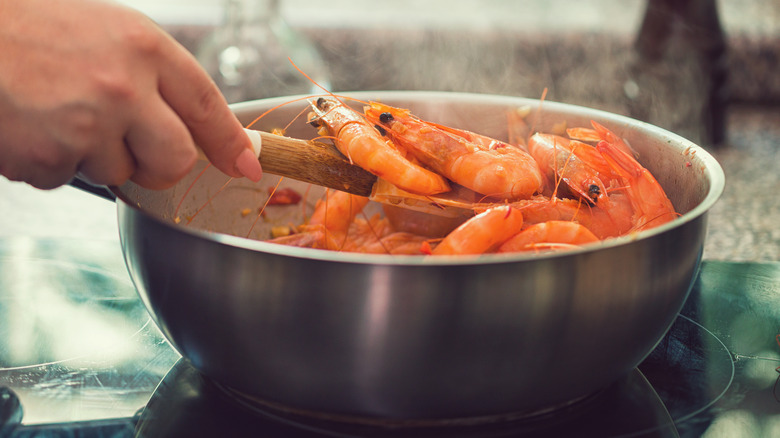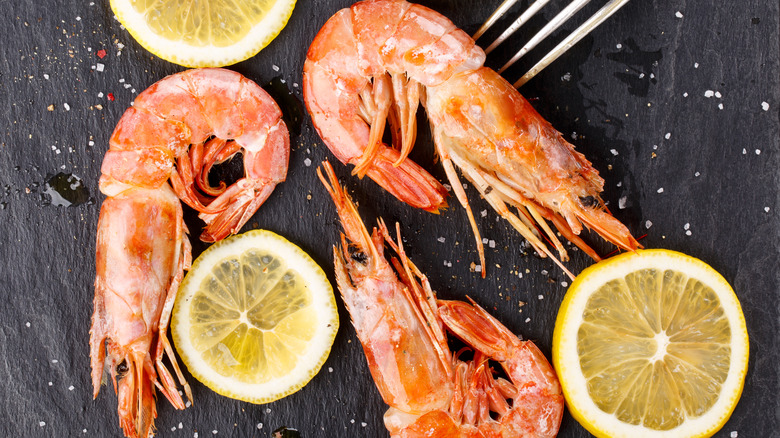The Tasty Reason To Cook Shrimp With The Shells And Heads On
Shrimp is a seafood favorite in the United States, ranking right up there with salmon as one of the top two go-to marine delicacies. While some people enjoy eating shrimp for its savory umami undertone, as well as the subtle balance of saltiness and sweetness, others are drawn to this shellfish for its quick cooking time. But have you ever wondered why some cooks leave the shells and heads on? The secret lies in a simple yet interesting fact: Keeping the shells and heads intact enhances the natural flavor of the meal.
Shrimp shells contain certain molecules called ribonucleotides that enhance the savory umami flavor. Therefore, cooking shrimp with the shells intact allows this flavorful essence to penetrate the meat. Moreover, when using high-heat cooking methods to prepare shrimp, leaving the shells on provides a protective barrier for the delicate flesh, ensuring it remains tender and juicy, and therefore more tasty. Just be careful not to overcook the shrimp, or they'll still end up tough.
It's also worth mentioning that shrimp heads add an extra kick of flavor when you bite into them or squeeze out their juices thanks to the fatty content contained in the brains and eyes. So, if you're a fan of creamy or buttery dishes, shrimp heads might be right up your alley.
More reason to eat shrimp shells and heads
Besides making your meals tastier, adding shrimp shells and heads to your diet can actually boost the nutritional value. These exoskeletons contain a substance called chitin which, according to Healthline, may stimulate the growth of healthy gut bacteria. This is the bacteria within the human digestive system that, at its optimum level, aids digestion and boosts your immune system.
A recent scientific study further revealed that the heads of some shrimp species contain lipids that can potentially reduce the risk of cardiovascular diseases in humans. In addition, shrimp heads are rich in proteins, omega-3 fatty acids, and antioxidants like astaxanthin and selenium, which protect body cells from damage, as noted by the National Institutes for Health.
Cooking shrimp with the shells and heads still on packs your meals with flavor and nutrients, giving you a great dining experience. But if you're not up for using them right away, why not save them for later and use them to create homemade shrimp stock? This flavorful stock can be used as a substitute for water or fish stock in various seafood recipes like paella or jambalaya.

